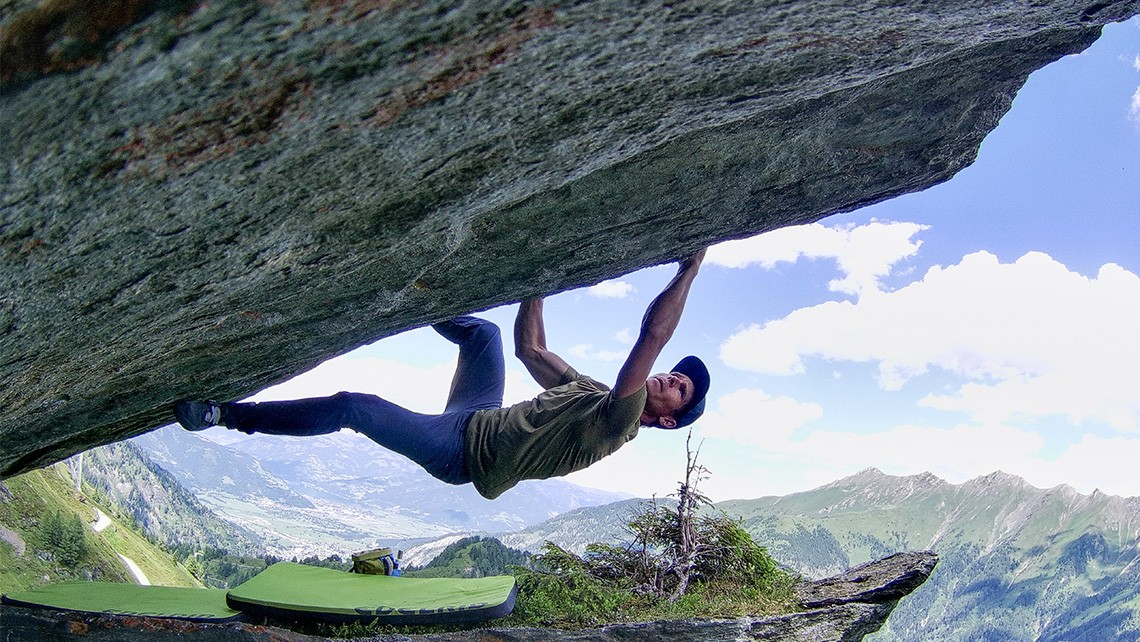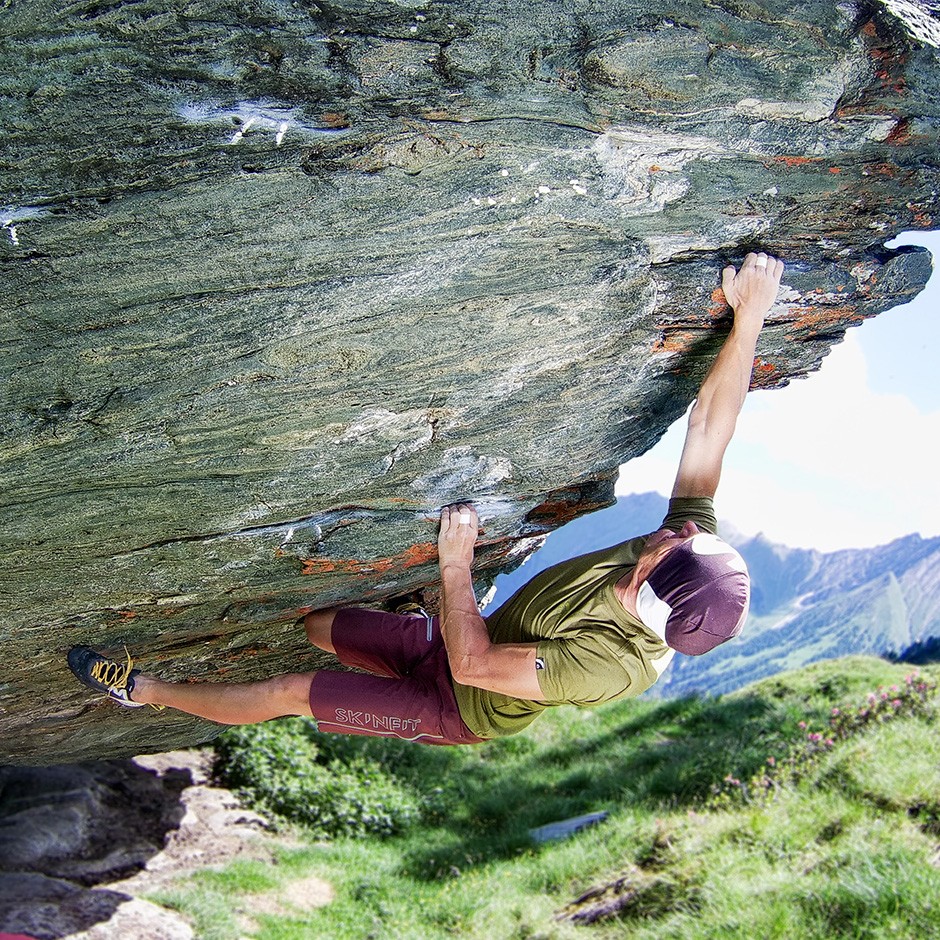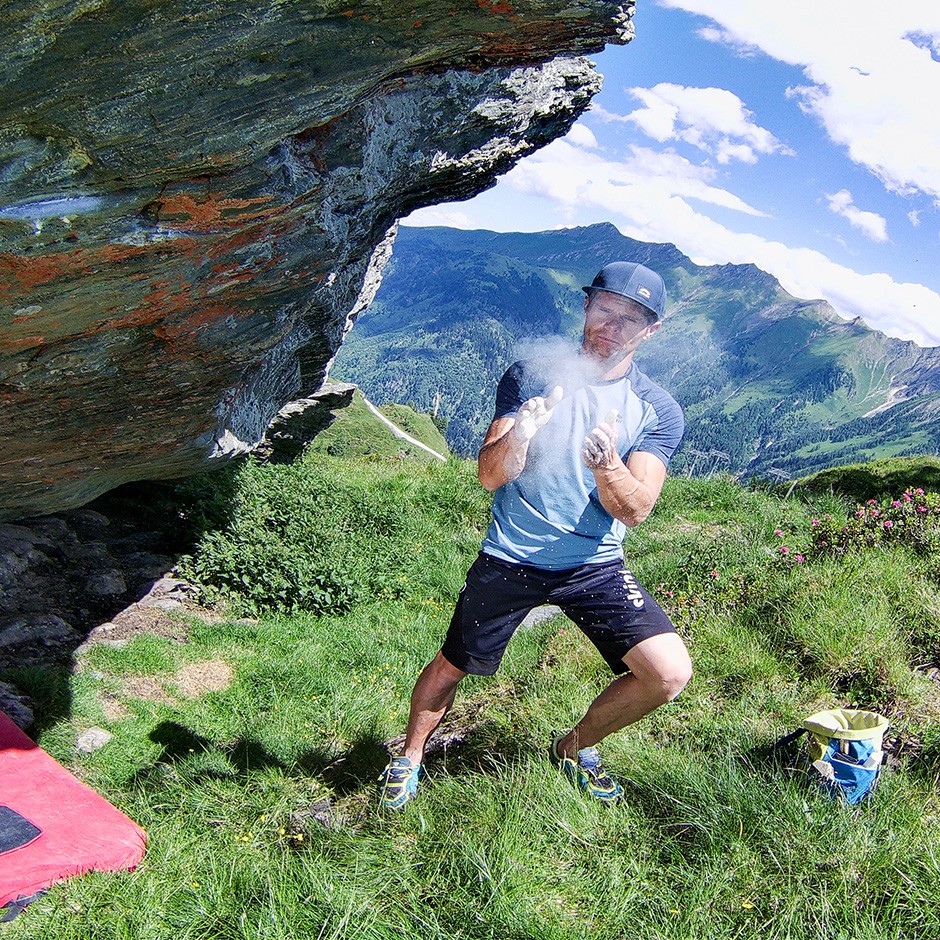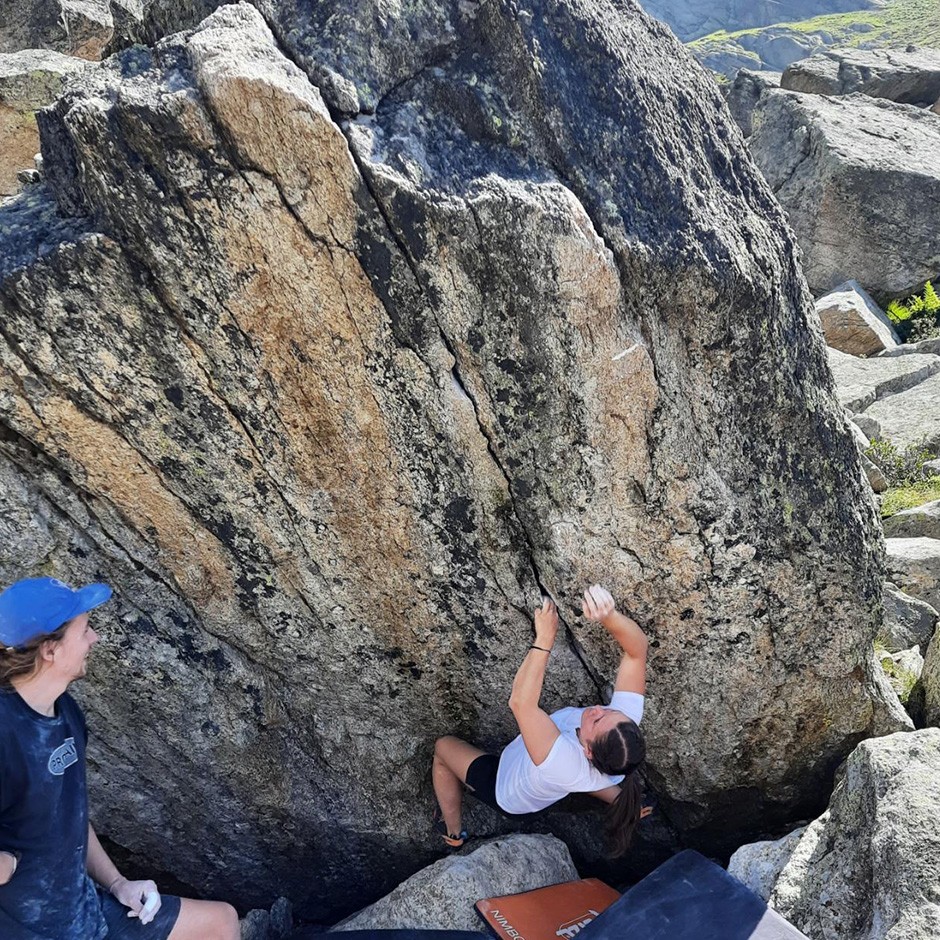et
Bouldern
Climbing short distances and without belay. If you fall, you fall soft. Indoor or rather outdoor. Alone or with friends. Technique and acrobatics are in demand. Sounds exciting? We're talking about bouldering now.

What is bouldering?
Climbing exites you, but your fear of heights always makes you retreat? Then just go bouldering! You don't climb that high and you can always climb down or jump down on the mat. You say you have too weak arms? Then use your legs more and use the right technique, so you're one move ahead of the muscle guy next to you. You think you are too heavy? Then turn your mass into muscle mass and be amazed.
Climbing at jumping height
Did you know that bouldering comes from the English term "boulder" and means something like "boulder"? In German usage, the word was then adopted and in the community one says "go bouldering", because it is understood as the rope-free climbing at jumping height on rocks, boulders or artificial climbing walls in halls. In contrast to sport climbing, bouldering involves jumping off rather than roping down. In order to still be protected, the floor in the halls is padded with thick, soft mats and outdoors so-called "crash pads" are used. These soft pads have the positive side benefit that you can also use it as a chill-out area to take a break, enjoy the sun or comfortably watch someone find the solution.
No matter if you want to do bouldering as a balancing strength training for running or cycling, as a small fitness unit with a high fun factor, or if you want to enthusiastically like a child search for solutions to problems - bouldering is perfect for that. You build strength over time, learn technique and tactics, have to challenge your brain to find the right holds for each move. Like climbing, bouldering involves many factors that affect performance. And it's rarely just about strength.


From bouldering problems to bouldering solutions
New discoveries, first ascents, following lines given by nature that no one has climbed before and seem impossible - that is the appeal of bouldering. To increase and improve physically as well as mentally in this process along the way until the seemingly unclimbable line becomes possible is pure fascination. A boulder problem is a route that one tries to solve by skillful and technical climbing. Body tension, gripping and kicking technique, as well as a necessary willpower to try again and again play an important role on the way to the goal - to the solution.
Outside-Performance
As with any sport practiced outdoors in nature, conservation and the proper treatment of nature is a big issue in bouldering. In itself, it is a very natural sport: the rock is not modified by pitons, the holds, as far as solid, are not modified and you climb only with shoes and your own hands. However, with time, changes become visible due to the "chalk" used (i.e. magnesium powder to counteract slippery fingers) and due to the shoes, holds and footholds can become greasy and dirty. Therefore, when leaving the spot, remove the traces of use as best you can.


Into the pleasure
When people get together to boulder, it's not about persistently climbing through each route. It's much more about spending time with friends, deliberating over complex lines together and giving each other tips. So bouldering is much more than just stubbornly climbing up, falling down, and then climbing back up. Strategy, strength, agility, balance, coordination, but most of all fun and community are the attributes that matter in the bouldering sport.






